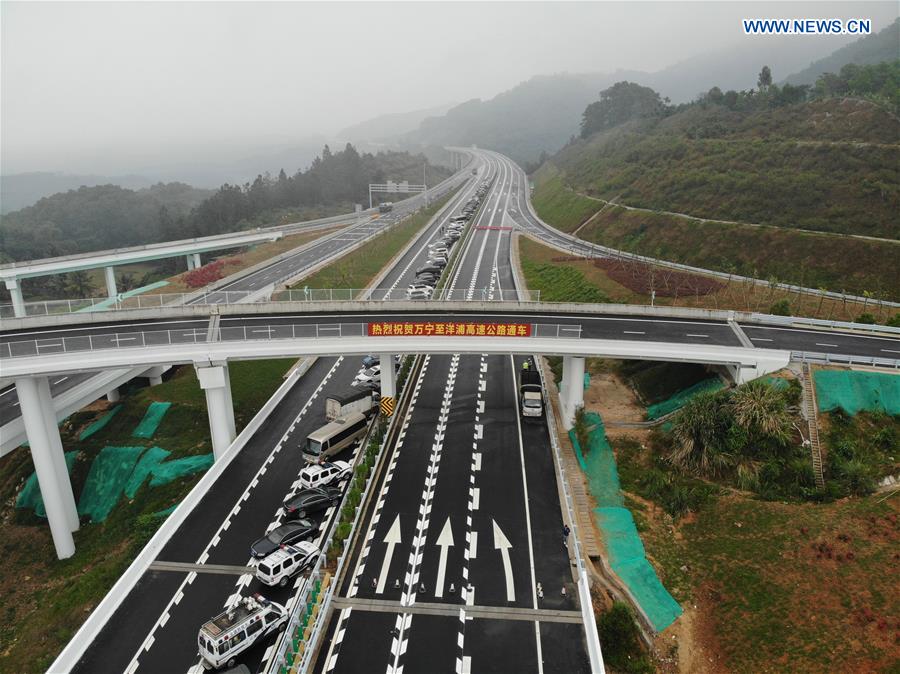Expressway network spreads across nation
 0 Comment(s)
0 Comment(s) Print
Print E-mail China Daily, April 7, 2021
E-mail China Daily, April 7, 2021

From zero to 160,000 kilometers, China has built the world's largest expressway network in less than the past four decades.
The network has embraced 99 percent of cities and regions whose urban population exceeds 200,000, Wang Songbo, deputy director of the comprehensive planning department of the Ministry of Transport, said on Tuesday.
He added it will be upgraded by 2035 to cover all cities and counties with a population exceeding 100,000.
"In the meantime, technology has made transportation smarter, with timely monitoring of the status of the expressways and handling of emergencies," Wang said. He added that highway mileage accounts for 3.1 percent of the nation's total road mileage, but carries over half the freight nationwide.
"We have also been exploring digital infrastructure. Based on the Beidou satellite navigation system, big data and cloud computing, a smart road network management platform is under development."
China entered the expressway era when the 15.9-kilometer-long Hujia (Shanghai-Jiading) Expressway, which links downtown Shanghai with Jiading district in its northwest, opened to traffic in October 1988.
Following its success was the opening of the first highway in Liaoning province, between Shenyang and Dalian, which is 348.5 km long.
Zhang Kuihong, deputy chief engineer of the Hujia Expressway project, said he was very excited to see the rapid growth of China's transportation sector, especially in Shanghai.
Recalling the day when the Hujia Expressway opened in 1988, the former engineer, who was in a helicopter introducing the route to a local TV station at the time, said it looked like "a golden ribbon" in the sunshine.
"Products such as chicken, fish and shrimp needed to be transported from suburbs such as Jiading to Shanghai's downtown area by road. However, before the highway, it could take more than two hours to travel the 20 km between the two areas if the traffic was heavy," the 79-year-old said.
That was the major reason the government initially decided to build the highway. However, there were disagreements about the need for the road among officials, as some felt that the very low level of automobile ownership in China at the time did not justify the expense.
However, after conducting thorough research, the government supported the Hujia Expressway pilot project and construction started in 1984.
"Thanks to the highway, the commute time from downtown Shanghai to Jiading was reduced to 30 minutes, and that accelerated the development of the economy and tourism in the city," Zhang said.
Near the highway's entrances and exits, for example, an industrial park was built in the town of Taopu. Nanxiang, an ancient town in Jiading that is famous for its steamed buns, also welcomed more visitors due to the highway.
"Witnessing these achievements brought by the highway, I am so proud," he said.






Go to Forum >>0 Comment(s)